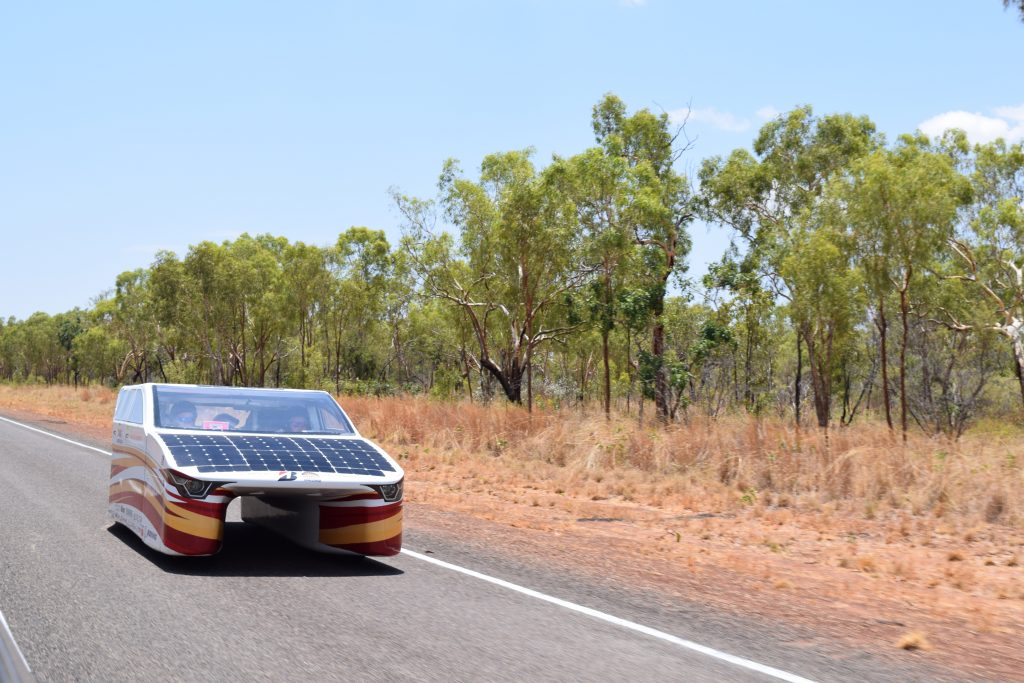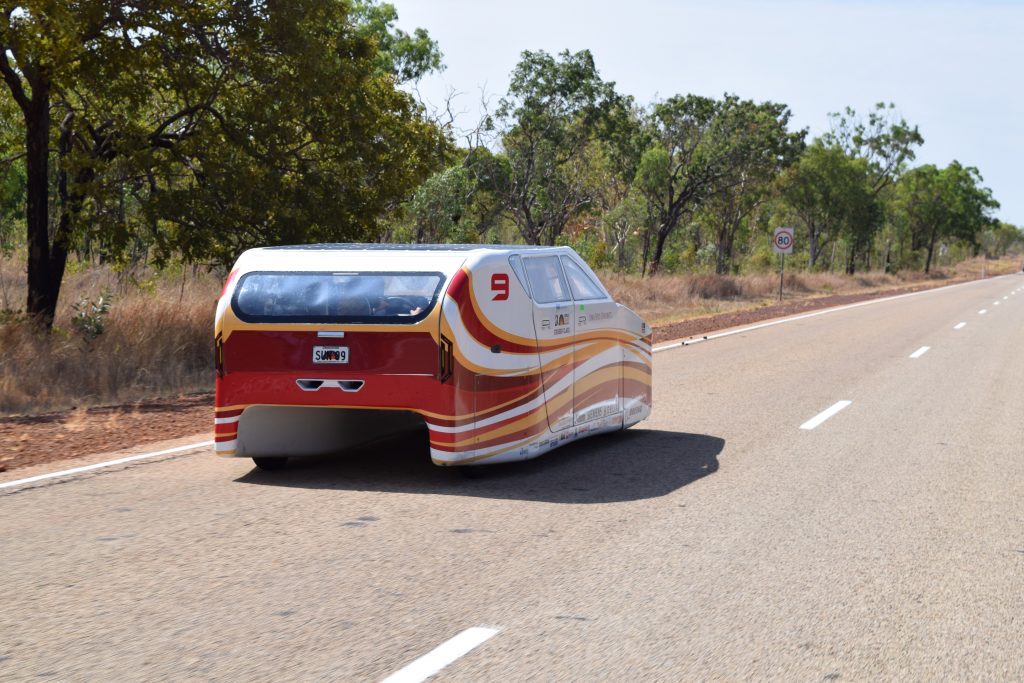NORTHERN TERRITORY, AUSTRALIA – PrISUm Solar Car got 387 kilometers closer to the finish line in day two of the Bridgestone World Solar Challenge.
Temperatures hovered in the 90s and the skies went from clear to partly cloudy with a few sprinkles as the team progressed southward. Shortly after a brief stop in the town of Elliott the team encountered what it suspects were issues with the battery overheating, similar to the first day of the race.
“We are stretching the limits of the batteries,” said Nate Coonrod, the team’s Assistant Electrical Director and a senior in electrical engineering who specializes in batteries. “Battery temperatures are on the edge of what is tolerable despite a comprehensive thermal system and we have not received as much array power as expected. These issues have compounded to severely reduce our strategy options near the end of the day when road surface temperatures are over 125 degrees Fahrenheit in the outback.”
Over the summer the team drove the car – Penumbra – across Iowa’s 99 counties in an event dubbed SunRun. In addition to serving as an outreach opportunity, SunRun also aimed to provide the team a test run for the Bridgestone World Solar Challenge by driving the car across Iowa’s varying terrains during the hot midwestern summer.
“We have been running our car a lot harder than we have before and that strains battery cells,” said Dylan Neal, a mechanical engineering senior who serves as the team’s Project Director. “We have definitely tested the car’s limits, efficiency, and dynamic performance, but issues are inevitable. Luckily, the issues can be addressed through understanding how to better plan the race day and some analysis work on the battery system overall this evening. We are always learning and always adapting.”
In an effort to keep the battery cool while driving Penumbra was designed with nacaducts, a set of intake slots at the front of the car which bring air from the road into the battery box.
“The nacaducts are working as expected, but ambient temperature is so close to the limit of our cells that the air we’re cooling with is too hot to operate. Many commercial vehicles utilize liquid cooling at the expense of weight to solve this problem,” Coonrod said.
Despite the setbacks the team plans to keep trucking and hopes to finish strong when they cross the finish line in Adelaide.
“We have been training for this race for two and a half years. Through every bleak moment in Penumbra’s construction, every race, and every event, our team has developed the skills to handle any challenge. In order to finish the race and perform, our strategy team will be doing thorough analysis of our race route and comparing it to the numbers we have seen from racing the past two days,” said Neal.
“We have a plan, all it needs is some further development. At the same time, all other members will be addressing any inefficiencies with the vehicle or team. If there is any team that can face the World Solar Challenge, it’s PrISUm. We are out here here to challenge the way the public perceives sustainable technology and transport. We will give our all into seeing that dream become a reality.”
The Bridgestone World Solar Challenge is a 3021-kilometer biennial race that began in Darwin in Australia’s Northern Territory on October 8 and finishes in Adelaide in Southern Australia on the 15th. 2017 marks the race’s 30th year and features 42 teams from more than a dozen countries.


